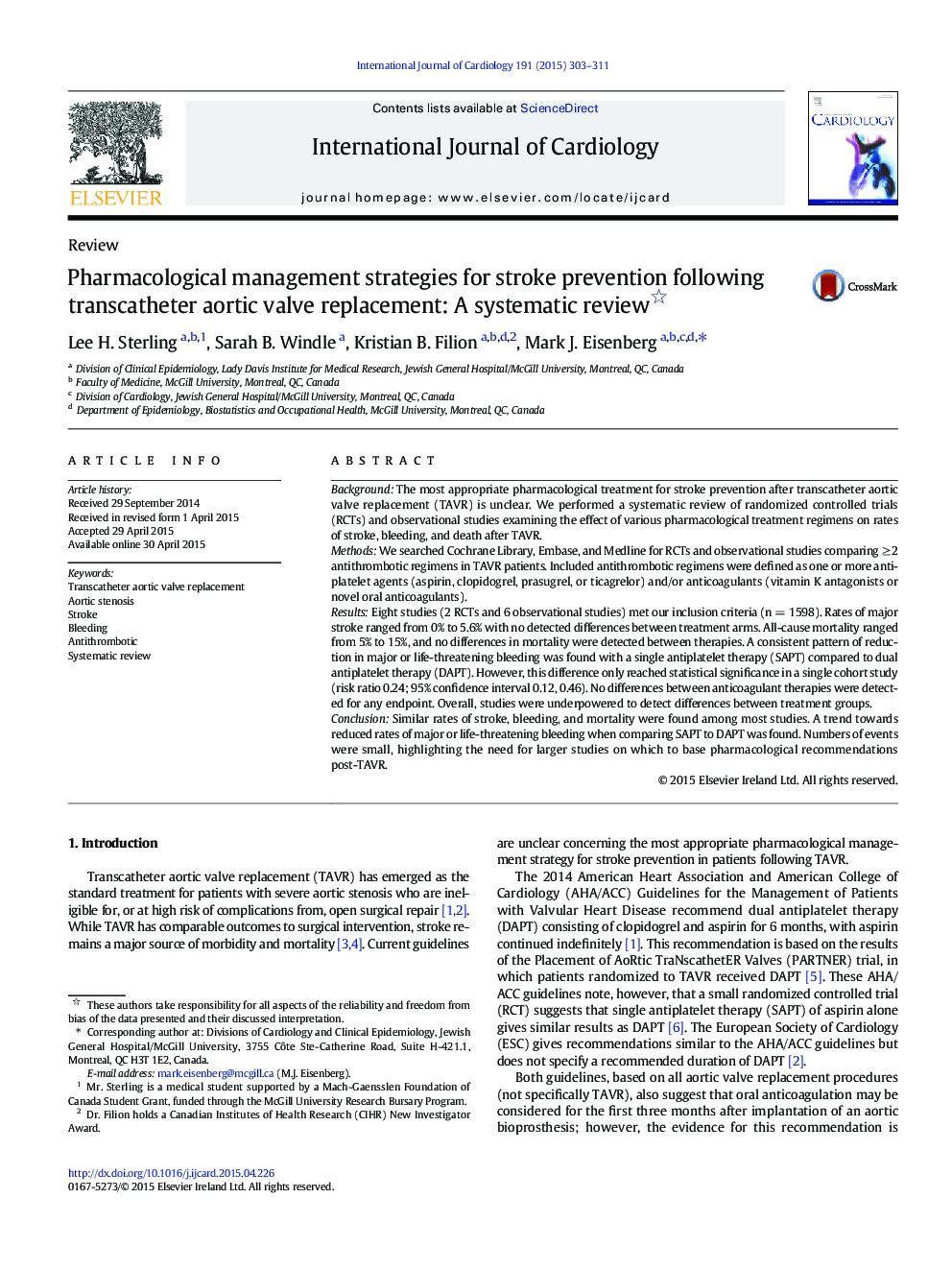| Article ID | Journal | Published Year | Pages | File Type |
|---|---|---|---|---|
| 5966811 | International Journal of Cardiology | 2015 | 9 Pages |
â¢Trials and observational studies of drugs post-TAVR were systematically reviewed.â¢No differences in mortality or stroke were found between drug regimens.â¢Single compared to dual antiplatelet therapy may reduce serious bleeding.â¢No differences between anticoagulant therapies were detected for any endpoint.â¢There were few events overall; larger drug studies post-TAVR are needed.
BackgroundThe most appropriate pharmacological treatment for stroke prevention after transcatheter aortic valve replacement (TAVR) is unclear. We performed a systematic review of randomized controlled trials (RCTs) and observational studies examining the effect of various pharmacological treatment regimens on rates of stroke, bleeding, and death after TAVR.MethodsWe searched Cochrane Library, Embase, and Medline for RCTs and observational studies comparing â¥Â 2 antithrombotic regimens in TAVR patients. Included antithrombotic regimens were defined as one or more antiplatelet agents (aspirin, clopidogrel, prasugrel, or ticagrelor) and/or anticoagulants (vitamin K antagonists or novel oral anticoagulants).ResultsEight studies (2 RCTs and 6 observational studies) met our inclusion criteria (n = 1598). Rates of major stroke ranged from 0% to 5.6% with no detected differences between treatment arms. All-cause mortality ranged from 5% to 15%, and no differences in mortality were detected between therapies. A consistent pattern of reduction in major or life-threatening bleeding was found with a single antiplatelet therapy (SAPT) compared to dual antiplatelet therapy (DAPT). However, this difference only reached statistical significance in a single cohort study (risk ratio 0.24; 95% confidence interval 0.12, 0.46). No differences between anticoagulant therapies were detected for any endpoint. Overall, studies were underpowered to detect differences between treatment groups.ConclusionSimilar rates of stroke, bleeding, and mortality were found among most studies. A trend towards reduced rates of major or life-threatening bleeding when comparing SAPT to DAPT was found. Numbers of events were small, highlighting the need for larger studies on which to base pharmacological recommendations post-TAVR.
